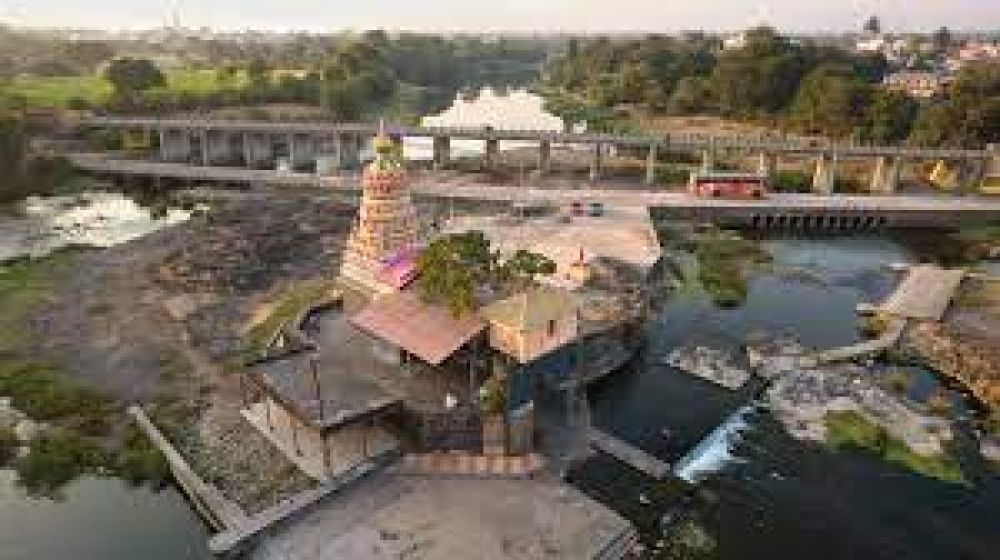

The Koteshwar Mandir, situated in the heart of Satara in Maharashtra, India, is an ancient Hindu temple dedicated to Lord Shiva. Known for its historical and religious significance, the temple has been a locus of spirituality and worship for centuries.
The origins of the Koteshwar Mandir date back to a time when Satara was ruled by the Maratha Empire. Over the years, the temple has witnessed numerous renovations and developments, although the exact date of its founding remains shrouded in mystery.
Tourism to the Koteshwar Mandir started gaining momentum post-Independence as the newly formed Indian government began promoting its rich tapestry of cultural and religious sites. The temple's serene surroundings and proximity to the confluence of the Krishna and Venna rivers make it a popular spot for both pilgrims and travelers seeking tranquility.
Featuring traditional Maratha architecture, the temple boasts intricate carvings and designs that draw visitors and architecture enthusiasts from around the world. The temple, while modest in size, holds a deep spiritual aura that encapsulates its historical significance. This combination of spiritual and aesthetic appeal contributes to the site's allure as a tourism destination.
The Koteshwar Mandir is particularly known for its celebrations during the Hindu festival of Maha Shivaratri, during which the temple comes alive with devotional activities and attracts thousands of devotees from across India. This period marks the peak tourist season for the temple when the grandeur of the festivities captures the essence of Indian cultural heritage.
In recent years, there has been a steady rise in experiential and spiritual tourism in India, with travelers seeking authentic cultural experiences. Koteshwar Mandir's involvement in this trend is evident as it provides a platform for visitors to engage with the local rituals and understand the philosophies underlying Hindu worship practices.
Additionally, eco-tourism and sustainable tourism practices have started to influence the way tourist spots like Koteshwar Mandir are maintained and managed. Efforts are being made to ensure that tourism development does not adversely affect the temple's spiritual ambiance and the surrounding environment.
For travelers looking to visit Koteshwar Mandir, the temple is easily accessible by road and is close to other tourist attractions in Satara, including Sajjangad Fort, Thoseghar Waterfalls, and the scenic Kaas Plateau, known for its seasonal wildflower blooms.
The ideal visiting time is early mornings or evenings, especially during religious festivals when the temple's spiritual atmosphere is at its peak. The temple offers a glimpse into the devotional life of Satara and is a testament to the city's deep-seated reverence for its historic and cultural traditions.
The Koteshwar Mandir remains a beacon of spirituality and stands as a significant cultural landmark in Maharashtra's tourism landscape. As a living piece of India's diverse religious tapestry, it continues to draw seekers and curious travelers, serving both as a pilgrimage spot and a window into India's timeless traditions.